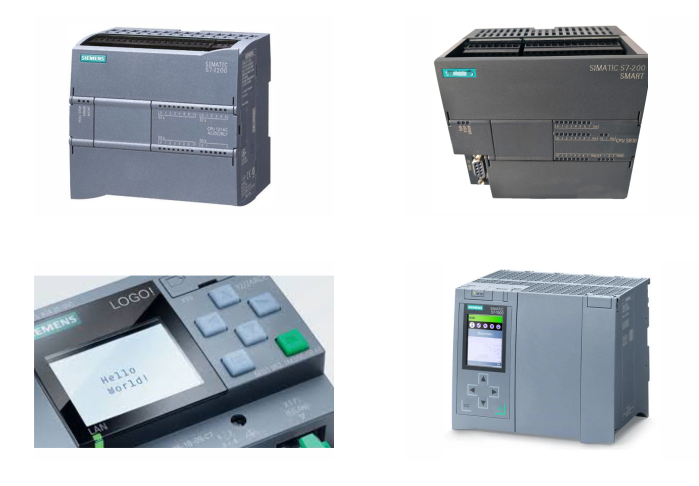
Motor control using PLC (Programmable Logic Controller) has revolutionized the way industries manage and automate their systems. PLCs are widely used in manufacturing, processing plants, and other sectors where automation plays a critical role. In this blog, we will explore how motor control using PLC works, why it is so effective, and how it benefits various industries. We’ll also dive into the basic components involved and how they are used to manage motors effectively.
What is a PLC?
Before discussing motor control using PLC, let’s first understand what a PLC is. A Programmable Logic Controller is a type of computer used in industrial automation. It controls machinery and processes based on inputs and outputs. PLCs are designed to work in harsh industrial environments, and they provide reliable, efficient, and flexible control solutions.
PLCs can be programmed to execute specific commands based on signals they receive. These signals can come from sensors, switches, and other devices. When it comes to motor control using PLC, the PLC receives signals from control systems and adjusts the motor’s operations accordingly.
Why Use PLCs for Motor Control?
PLC-based motor control is widely favored for a variety of reasons:
Flexibility: PLCs can be easily programmed and reprogrammed to manage different types of motors and machinery. This makes it easy to adjust the system for different tasks.
Precision: The ability to accurately control motor speed, torque, and direction is essential in many industrial applications. Motor control using PLC allows for precise adjustments, leading to better performance and efficiency.
Scalability: Whether you need to control one motor or hundreds, PLCs can handle various scales of operations. They are easily integrated into both small and large systems.
Safety: Motor control using PLC often includes safety features such as overload protection, emergency stops, and fault detection. These features help protect equipment and personnel from harm.
Automation: One of the main advantages of motor control using PLC is that it can automate complex tasks, reducing the need for human intervention. This improves productivity and reduces the chances of error.
Basic Components in Motor Control Using PLC
When designing motor control systems using PLCs, several key components are involved:
PLC Unit: This is the brain of the operation. The PLC receives inputs, processes the data, and sends outputs to control the motor.
Motor: This is the device that performs the mechanical work. It could be an AC motor, DC motor, or stepper motor depending on the application.
Sensors: Sensors provide feedback to the PLC about the motor’s status. For example, speed sensors monitor the rotation of the motor, while temperature sensors ensure the motor is not overheating.
Switches and Buttons: These allow operators to start, stop, or adjust the motor manually. They send signals to the PLC, which then makes adjustments accordingly.
Relays and Contactors: These are electrical switches that allow the PLC to control the motor. Relays are used for low-power applications, while contactors handle higher-power loads.
Variable Frequency Drives (VFDs): In some systems, VFDs are used to control the speed of AC motors by adjusting the frequency of the electrical supply. These are often used in motor control using PLC for applications that require variable speed.
How Does Motor Control Using PLC Work?
Let’s break down how motor control using PLC works in a simple step-by-step process:
Input Stage: The first step in motor control using PLC is receiving input from various sources. This can include buttons, switches, or sensors that provide information about the system’s current status. For example, a sensor might detect that a conveyor belt has reached the end of its cycle and needs to stop.
Processing Stage: Once the PLC receives input, it processes this data based on the program it has been given. This program defines how the PLC should respond to each input. For example, if the sensor detects that the motor should stop, the program will instruct the PLC to stop the motor.
Output Stage: After processing the input, the PLC sends an output signal to the motor or other control devices like relays or VFDs. This signal could start, stop, or adjust the motor’s speed or direction.
Feedback Loop: In many cases, motor control using PLC involves continuous monitoring of the system. Sensors send real-time feedback to the PLC, which adjusts the motor as necessary. For example, if a motor is running too fast, the PLC will receive feedback from a speed sensor and adjust the motor’s speed accordingly.
Applications of Motor Control Using PLC
Motor control using PLC is used in a wide variety of applications across multiple industries. Some common examples include:
Conveyor Systems: In manufacturing and logistics, conveyor systems are widely controlled by PLCs to ensure smooth and precise movement of materials.
Pumps and Fans: In water treatment plants, HVAC systems, and other sectors, pumps and fans are often controlled by PLCs to maintain optimal flow rates and pressure.
Robotics: PLCs play a crucial role in controlling motors in robotic arms and automated machinery, allowing for precise movement and task execution.
Cranes and Hoists: In heavy industries like shipping and construction, PLCs are used to control motors in cranes and hoists, ensuring safe and efficient lifting operations.
Mixers and Grinders: In food processing and chemical industries, motor control using PLC helps automate the operation of mixers and grinders for consistent output and quality.
Conclusion
Motor control using PLC is a powerful tool in industrial automation. It offers flexibility, precision, and safety, making it an ideal solution for controlling various types of motors across different industries. By integrating PLCs into motor control systems, industries can achieve higher efficiency, lower costs, and improved safety, all while maintaining control over complex operations.


